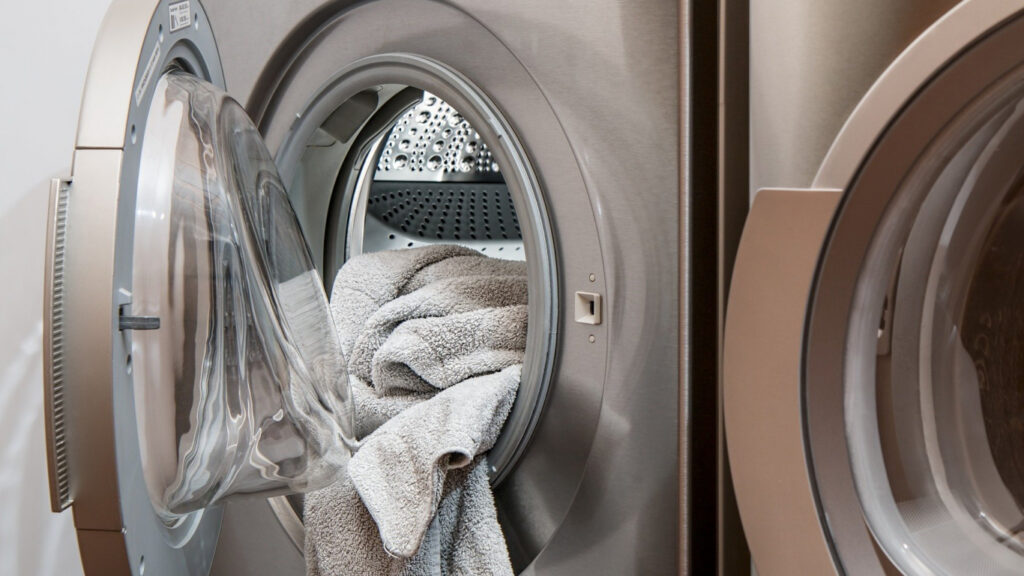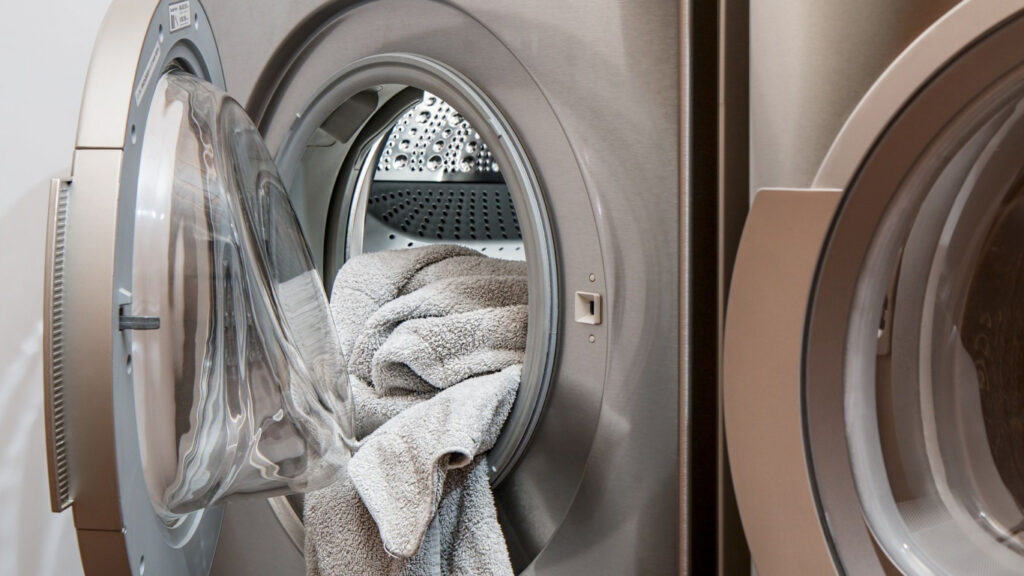Buying Guide for Washing Machine

- What is a washing machine?
- How does a washing machine work?
- Advantages & fields of application
- Save time
- Adaptation to the type of laundry
- Water-saving
- Washing efficiency
- What types of washing machines are there?
- The porthole washing machine
- The top washing machine
- The built-in washing machine
- The washer-dryer
- What should you watch out for when purchasing a washing machine?
- Energy class
- The capacity of the washing machine
- The programs
- The spin speed
- Aesthetics and options
- Alternatives to the washing machine

What is a washing machine?
The washing machine is one of the most common household appliances in homes around the world. This is a device equipped with a window or a hatch that allows washing, rinsing and spinning a certain amount of laundry automatically.
Detergent, as well as other fabric softeners and disinfectants, can be added to the machine to treat laundry as needed. Laundry washed in a washing machine should then be dried in a tumble dryer or placed in a warm, dry place.
Some washing machines also have a tumble dryer function that allows them to dry the laundry themselves after washing.
How does a washing machine work?
The first step is to understand the principle of a washing machine. The operation of a wash is simple: once the laundry is loaded into the machine through the porthole or hatch, detergent must be added in the drawer provided for this purpose or directly in the porthole. The machine will then be locked by the user, who will also have to select a programme appropriate to the type of laundry to be washed.
Each programme allows you to set a washing time, drum speed and wash water temperature. The washing machine will then wash the laundry automatically until it completes the set program. At the end of the program, the laundry door will be unlocked.
Advantages & fields of application
The advantages of the washing machine are:
Save time. Indeed, washing by hand takes a long time to be carried out while washing by machine is speedy.
Adaptation to the type of laundry. The different programs of a washing machine allow you to adapt the water temperature and the speed of rotation to the type of laundry you want to wash.
Water saving. Contrary to what you might think, machine washing saves water while hand washing requires a lot of water to complete.
Washing efficiency. Laundry is cleaner after washing in the machine than after washing by hand. Depending on the type of laundry, it can be cleaned more thoroughly.
What types of washing machines are there?
Our investigation revealed that there are many different types of washing machines on the market. They all have their advantages and disadvantages.
The porthole washing machine
This is the most common type of washing machine. They have an opening porthole at the front of the machine. In general, the laundry drawer and the program table are also located on the same side as the window.
The main advantage of this type of washing machine is that it is possible to install another appliance on top of it. For example, a tumble dryer can be placed on top of the washing machine to save space in the laundry room or bathroom. In most cases, the washing machine can also be recessed under the kitchen worktop.
However, loading laundry through the porthole is less practical because it requires bending down or kneeling. Its main advantages are the possibility of being built-in or superimposed and higher capacity with each wash.
The disadvantages are the inconvenient position for the user to load the machine and the possibility of leakage through the porthole over time.
The top washing machine
This type of washing machine has an opening on the top of the machine. It can, therefore, be loaded upright and is easier to use. Often narrower, it saves space but has a low capacity.
These models are neither stackable nor built-in. Its advantages are the ease of use as well as its reduced dimensions which allow it to slide into any corner. Its disadvantages are its small capacity and its opening over, which makes any incorporation impossible.
The built-in washing machine
A built-in washing machine is a model specifically designed to be integrated into a kitchen. It is often less aesthetic but will harmonize with the rest of the kitchen during the final dressing. It is practical but more expensive than a conventional washing machine.
As it is intended to be recessed in a kitchen or bathroom, it cannot have an opening on the top. But is equipped with a porthole. The advantage of a built-in washing machine is its ability to blend in with its surroundings. Its disadvantages are its price as well as its less practical use.
The washer-dryer
This device combines two functions. It can wash clothes with detergent, then wring and dry them.
It is therefore convenient, as it saves space by having only one 2-in-1 device instead of having two, thus avoiding you to buy two separate devices. However, these devices are more expensive than conventional washing machines and can only dry half of the total capacity of the machine.
The advantage of the washer-dryer is its combination of two devices in one. The disadvantages of this type of appliance are the reduced capacity during drying and the much higher purchase price.
What should you watch out for when purchasing a washing machine?
To be sure that you are buying the best product available, you should take into account the following five criteria:
Energy class
If you want to get the most out of your washing machine purchase, it is best to choose the one with the best energy efficiency. This can vary from D to A +++ for the best devices.
Despite appearances, this data has a significant influence on your annual electricity and water bills. This is why this point is not minimize.
The capacity of the washing machine
Most of the washing machines can be divided into three families of capacities: 7 kg and less, from 7 kg to 10 kg and 10 kg and more. If you match the capacity of your washing machine to your actual needs, you can ensure better performance with each wash and better wash quality.
Thus, you will be able to save significant energy and water each time you use the device.
The programs
A washing machine that does not have varied and suitable programs could not be considered the best.
The different programs offered must allow you to vary the spin speed depending on the type of laundry you want to wash, the type of wash (white, colour, etc.) as well as the temperature of the wash water (up to 90 ° C).
The spin speed
The washing machines have rotation speeds ranging from less than 1,100 revolutions per minute to more than 1,800 revolutions per minute. Choosing the right spin speed for the amount of laundry you own as well as the way you dry the laundry will ensure you are using your appliance in the best way.
Aesthetics and options
This point is more personal. However, most of the time, the best washing machines are aesthetically pleasing and have many options for better washing results: Wi-Fi connection, delayed start, escape hatch, etc.
Alternatives to the washing machine
The washing machine has become one of the most indispensable household appliances for modern families. However, some ecological and economic alternatives exist:
- The pedal washing machine.
- The foot-operated mini washing machine.
- The Bike washing machine.
If you wish to buy washing machines from Turkey, please do not hesitate to contact us by mail at [email protected] or to call us at +90 532 361 5149. We can help you to get in direct contact with producers or provide you with everything that you need.


